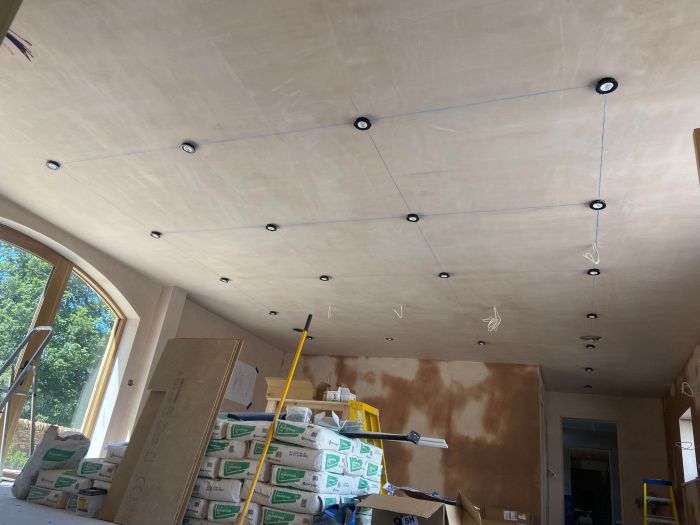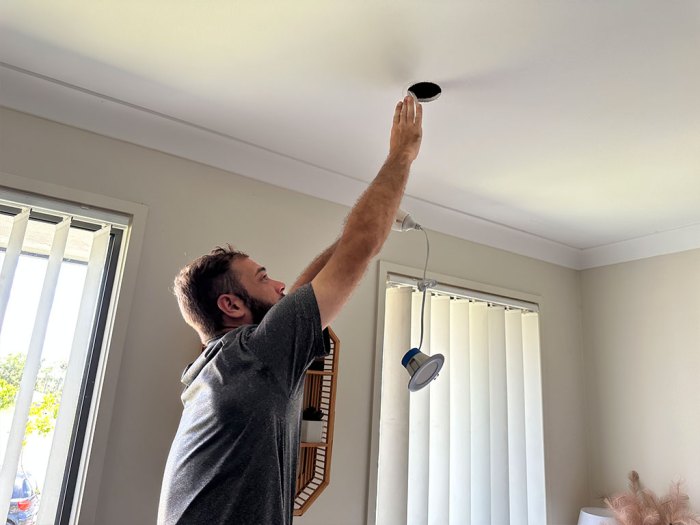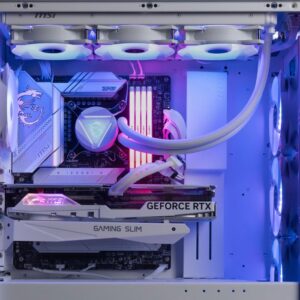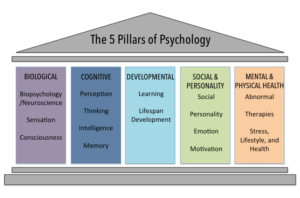
LED lighting installation is transforming the way we illuminate our spaces, offering a perfect blend of efficiency and innovation. Whether you’re considering an upgrade for your home or setting up a modern office environment, understanding the essentials of LED installation can lead to remarkable changes in both ambiance and energy costs.
From the fundamental principles of installation to the latest trends in smart technology integration, this guide will take you through a step-by-step process, helping you avoid common pitfalls and ensuring a smooth transition to LED lighting.
LED Lighting Installation Basics

LED lighting has transformed the way we illuminate our spaces, combining energy efficiency with a long lifespan. Understanding the basics of LED lighting installation can help you achieve optimal results in your residential areas. With the right knowledge, tools, and techniques, you can enhance your home’s ambiance while reducing energy costs.The fundamental principles of LED lighting installation focus on understanding the types of LED lights available and the requirements for their successful implementation.
LEDs are available in various shapes and sizes, including bulbs, strip lights, and recessed lights, each serving different purposes. Proper planning is essential to determine the placement, spacing, and power requirements, ensuring the installed lights function effectively while meeting your aesthetic preferences.
Step-by-Step Guide for Installing LED Lights
Following a structured approach can simplify the installation process of LED lights. Here’s a step-by-step guide to assist you in this task:
1. Gather Necessary Tools and Materials
Ensure you have all required tools such as a screwdriver, wire strippers, electrical tape, and safety gear. Acquire the LED lights, mounting hardware, and connectors beforehand.
2. Turn Off Power
Safety is paramount. Always switch off the main power supply before starting the installation to avoid electrical hazards.
3. Plan Your Layout
Sketch a layout of your space, noting where you want to install the LED lights. Consider factors like natural light sources and furniture placement.
4. Install Mounting Hardware
Secure the necessary mounting hardware to the ceiling or wall, ensuring it is level and positioned according to your layout plan.
5. Connect Wiring
Carefully connect the LED lights to the existing wiring. Follow the manufacturer’s instructions for wiring connections, ensuring that positive and negative terminals are correctly aligned.
6. Test the Lights
Before finalizing the installation, turn on the power to test the lights. Check for consistency in brightness and functionality.
7. Secure Everything
Once confirmed that the lights work properly, secure all connections with electrical tape and finalize the mounting.
8. Clean Up
Dispose of any packaging and debris, ensuring a tidy workspace.
Common Mistakes to Avoid During Installation
While installing LED lights, being aware of common pitfalls can prevent issues later. Here are several mistakes to avoid:
Overlooking Compatibility
Ensure that the LED lights are compatible with existing dimmer switches or fixtures. Using incompatible products may lead to flickering or reduced life span of the bulbs.
Ignoring Layout Planning
Failing to adequately plan the layout can result in uneven lighting or dark spots. Take the time to map out the installation before proceeding.
Neglecting Power Ratings
Exceeding the maximum wattage rating for circuits can lead to tripped breakers or fire hazards. Always verify the wattage before connecting multiple LED lights.
Improper Wiring
Incorrect wiring can lead to shorts or malfunctioning lights. Double-check connections to ensure they are secure and correctly configured.
Forgetting to Test
Skipping the testing phase can result in overlooked installation errors. Always test lights after installation to confirm they work as intended.
“Proper planning and execution can enhance both the functionality and aesthetic of LED lighting in your home.”
Applications of LED Lighting
LED lighting has grown increasingly popular due to its versatility and energy efficiency. This technology is utilized in various settings, ranging from residential homes to outdoor environments, reshaping how we illuminate our spaces. Understanding the applications of LED lighting can help maximize its benefits, supporting both sustainability and innovation in lighting design.
Common Settings for LED Lighting
LED lights are widely used in different settings due to their adaptability and performance. Here are some locations where LED technology is frequently implemented:
- Homes: In residential areas, LEDs are utilized for general lighting, accent lighting, and task lighting. They can be found in fixtures such as ceiling lights, lamps, and under-cabinet lighting in kitchens.
- Offices: LED lighting is standard in modern office spaces, providing bright, uniform illumination that enhances productivity. They are used in panel lights, desk lamps, and as part of integrated lighting systems.
- Outdoor Environments: From streetlights to decorative garden lighting, LEDs are commonly applied in outdoor scenarios. Their durability and weather resistance make them ideal for illuminating pathways, parking lots, and public spaces.
Energy Consumption and Efficiency
One of the significant advantages of LED lighting is its impact on energy consumption compared to traditional lighting sources. LED lights consume significantly less power while delivering the same brightness level. For example, a standard LED bulb uses about 8 to 12 watts to produce the same amount of light as a traditional incandescent bulb that uses 60 watts.
“Switching to LED lighting can reduce energy consumption by up to 80%.”
This considerable reduction not only lowers electricity bills but also contributes to decreased greenhouse gas emissions. Many businesses and homeowners are shifting to LED technology for this reason, as it aligns with sustainability goals and enhances energy efficiency.
Role in Smart Home Technology
LED lighting plays a vital role in the realm of smart home technology and automation. Its compatibility with various smart systems enhances convenience and control over lighting settings.
- Automation: Smart LED bulbs can be programmed to turn on and off at specific times, providing homeowners with a sense of security and energy savings.
- Remote Control: Many LED lights can be controlled via smartphone applications, allowing users to adjust brightness levels and color temperatures from anywhere.
- Integration with Voice Assistants: LED lighting systems can be seamlessly integrated with voice-controlled devices, enabling hands-free operation and enhanced user experience.
The fusion of LED lighting and smart technology not only elevates the functionality of home lighting but also sets the stage for innovative approaches to energy management and user interaction.
Related Technology and Services
In today’s digital age, businesses involved in LED lighting can greatly benefit from various technological tools and services. Establishing a solid online presence through effective web hosting, domain names, and web design plays a critical role in marketing LED lighting services. Understanding these aspects allows businesses to reach a wider audience and enhance customer engagement.
Web Hosting and Domain Names
Selecting the right web hosting service and domain name is essential for any business looking to thrive online. A reliable web hosting provider ensures that your website is accessible around the clock, which is crucial for attracting potential clients. Additionally, the domain name should reflect your brand and be easy to remember, as it serves as the online address for your services.
Here are some key factors to consider:
- Uptime and Reliability: Choose a hosting provider with a strong uptime guarantee (99.9% or higher). This minimizes downtime and ensures your website remains accessible.
- Customer Support: Opt for a provider that offers 24/7 customer support, allowing you to resolve any issues promptly.
- Scalability: Ensure the hosting plan can grow with your business, accommodating increased traffic as your LED lighting services expand.
- SSL Certificate: Secure your website with an SSL certificate to enhance trust and protect customer data.
Web Design and Development
Effective web design and development play a significant role in enhancing the marketing of LED lighting services. A well-designed website not only attracts visitors but also converts them into customers. Key elements to focus on include:
- Responsive Design: Ensure your website is mobile-friendly, catering to users on various devices, as a significant percentage of traffic comes from smartphones.
- Visual Appeal: Use high-quality images and videos showcasing your LED lighting products in real-life settings. This enhances user engagement and helps potential customers visualize the products in their spaces.
- User Experience: Create a seamless navigation experience with clear menus and quick loading times to keep visitors on your site longer.
- Optimization: Implement strategies to increase visibility on search engines, thereby attracting more organic traffic to your website.
Monetizing a Blog or Website Focused on LED Lighting
Creating a blog or website centered on LED lighting presents several monetization opportunities. Leveraging relevant content can attract an audience and generate revenue through various channels. Here are effective strategies to consider:
- Affiliate Marketing: Partner with manufacturers and retailers to promote their LED products on your site, earning commissions on sales generated through your referrals.
- Sponsored Content: Collaborate with brands to feature sponsored articles or reviews that promote their LED lighting products while providing valuable information to your readers.
- Ad Revenue: Use platforms like Google AdSense to display ads on your website. As your traffic grows, so will your ad income.
- Online Courses and E-books: Create educational content around LED lighting installation, maintenance, or energy efficiency, and sell these resources to generate income.
Conclusive Thoughts

In summary, embracing LED lighting installation not only enhances the aesthetic appeal of your spaces but also contributes significantly to energy savings and sustainability. With the right knowledge and tools, you can create an environment that is both stylish and efficient, paving the way for a brighter, more sustainable future.
General Inquiries
What tools do I need for LED lighting installation?
You’ll typically need a measuring tape, wire strippers, screwdrivers, and a voltage tester, among other basic tools.
Can I install LED lights myself?
Yes, many LED installations can be done by homeowners, but it’s essential to follow safety guidelines and instructions carefully.
How do LED lights compare in lifespan to traditional bulbs?
LED lights can last up to 25 times longer than traditional incandescent bulbs, significantly reducing replacement frequency.
Are there any specific electrical requirements for LED lights?
Most LED lights operate on standard voltage, but it’s important to check the specifications to ensure compatibility with your existing fixtures.
What is the cost difference between LED and traditional lighting?
While LED lights have a higher initial cost, they save money over time through lower energy bills and longer lifespans.





